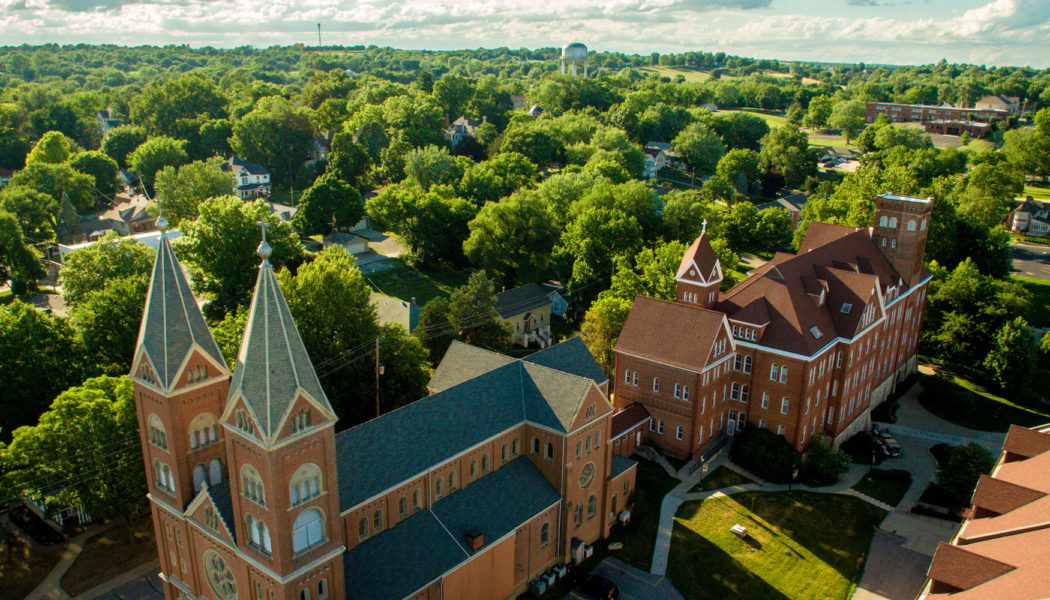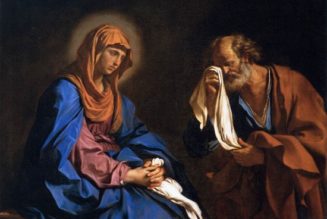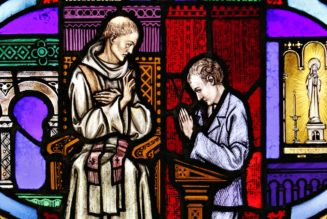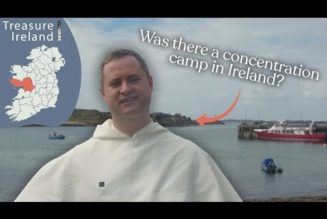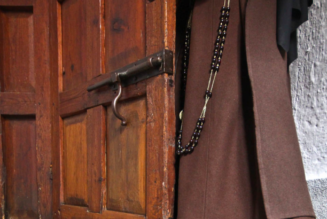
Early in Christ’s public ministry, Jesus was asleep on a storm-tossed boat until his terrified apostles awakened him. As the wind and waves rise again on the apostles in the 19th Sunday in Ordinary Time, Jesus is nowhere to be found — until he walks to them on the water.
As I go through the Life of Christ in The Extraordinary Story podcast, the two storms at sea caught me by surprised. I never really compared the details of these similar stories.
In both cases, he shows them they can trust him, whether he’s asleep or absent — and that storms just don’t affect him like they affect us.
A boat in the waves is the perfect lesson in trust: Your faith determines how you react when the whole world is shifting beneath you and there is no solid ground.
A storm overcomes the apostles’ boat, and it is “tossed about by the waves” while “the wind was against it. The danger lasts all night, with no sign of rescue from Jesus. In the Gospel, he doesn’t appear to the apostles until the “fourth watch,” between 3 and 6 am, at the darkest hour, just before the dawn.
To think of this metaphorically, the Apostles here learn how crazy your life is without Christ. Or you can think of the boat led by Peter as a symbol of the Church and see this rickety human institution fighting overwhelming winds in the dark, all alone, seemingly abandoned by Jesus.
Does that sound familiar? It did to Pope Benedict XVI who, just days before becoming Pope, led the Good Friday Way of the Cross for an ailing John Paul II.
“Lord, your Church often seems like a boat about to sink, a boat taking in water on every side. In your field we see more weeds than wheat,” he said. “When we fall, we drag you down to earth, and Satan laughs, for he hopes that you will not be able to rise from that fall; he hopes that being dragged down in the fall of your Church, you will remain prostrate and overpowered.”
That’s how it feels in the Church or in our lives when the winds just won’t let up and we see nothing but waves.
But then something remarkable happens, after long, frightened, fruitless hours of labor: The Apostels see a figure.
He must have been lit by lightning for them to see him. And he terrified them. They “cried out in fear” saying “It is a ghost!”
But when Jesus comes at the darkest hour, he doesn’t bring an oasis of calm and peace — he seems to be one with the storm, the face of the storm, the center of the storm; revealed in the storm, with the storm, as the storm.
Psalm 77’s language could describe it: “Your thunderous voice was in the whirlwind; your flashes lighted up the world. The earth was moved and trembled. Your way was through the sea, your path through the mighty waters, but the trace of your steps was not seen.”
In the kind of darkness we face without him, Jesus, in all of his uncompromising reality, appears part of the problem at first, instead of the solution. This is the kind of disorientation necessary for us to see Jesus for who he is.
In the podcast, I warned my listeners that this would be Jesus’s modus operandi going forward. Jesus will comfort his people in terrifying ways in the story to come: the Transfiguration, the Crucifixion, the Last Judgment. He will be a lamb for us, but a lamb that is slain; he will be a Good Shepherd, but one who gets killed by the wolf.
Christianity isn’t only a comfort blanket that calms nerves; often, it’s a hairshirt that irritates your skin. We know physiologically that stimulants can cause relaxation by sparking our counter-action against them. This seems to be true in the spiritual life that Jesus proposes, where he calms us by making us look directly at our troubles and walk in his hard solution.
Peter has the right response. He doesn’t ask Jesus to quiet the storm or to come to him. Instead, he asks Jesus to invite him forward into the storm.
Jesus says, “Come.”
This is us. We meet Jesus not in our boat or on his shore, but in the actions we do with him, or, in other words, by following through impossibly rough waters. When one storm after another swamps your life, all you can do is focus on Jesus and put one foot in front of the other on the waves, straining against the wind.
I have learned the hard way that Jesus doesn’t make storms go away: He makes you trust him as you walk through them, soaked to the bone.
This is also true of our life in the Church.
The Fathers of the Church say the storm represents two different forces.
Persecution is a “mighty wave” that “rises against the boat of Christ,” says Augustine — and today Christians are persecuted as never before, being murdered for the faith all over the world.
But St. Hilary points to a second force. We are also “tossed by the spirit of the antichrist, and by the troubles of the world.”
Or, as Pope Benedict went on in that Way of Cross before becoming Pope: “How much filth there is in the Church, and even among those who, in the priesthood, ought to belong entirely to him! How much pride, how much self-complacency! What little respect we pay to the Sacrament of Reconciliation, where he waits for us, ready to raise us up whenever we fall!”
Then he added, in his prayer to Jesus: “But you will rise again. You stood up, you arose and you can also raise us up.”
That’s the Church today. We have become the playthings of the storm, which for us is the deadly culture built by relativism, a culture whose wickedness we toy with, to our shame.
We have been driven far from the safe and sure path Christ set us on. We fear the storm, and we fear Jesus when we see him there.
We can pray the two prayers Peter prayed.
Think of the possible responses the Church has to the waves and wind, the persecution and dissent: We can hide from them and pretend they aren’t there but hiding from them won’t make them go away. We can give in to them, but giving in means being swept along by lies.
Peter gave us this first prayer: “Lord, if it is you, tell me come to across the water,” he says, then steps into the waves to meet the Lord of the storm.
It is often noted that the Gospel spells out where Peter goes wrong. “When he saw the wind, he was afraid,” and that’s when he started to sink, too.
We shouldn’t dwell on disaster, either, obsessing about how powerful the enemy is, how dangerous the persecutors are, and how damaged the boat is. We shouldn’t spend our time sounding the depths of the abyss of secularism and measuring the heights of the waves of opposition or the cowardice of those who are with us in the boat.
If we do, that’s where Peter’s next prayer comes in: “Lord, save me!”
Or, as Pope Benedict put it: “Save and sanctify your Church. Save and sanctify us all.”
The storm won’t stop, but it doesn’t have to, because he will reach out his hand. The Lord isn’t worried. His calm should be our cue. Truly, he is the Son of God. He’s got this, and he’s got us.
Image: Wiki-commons
